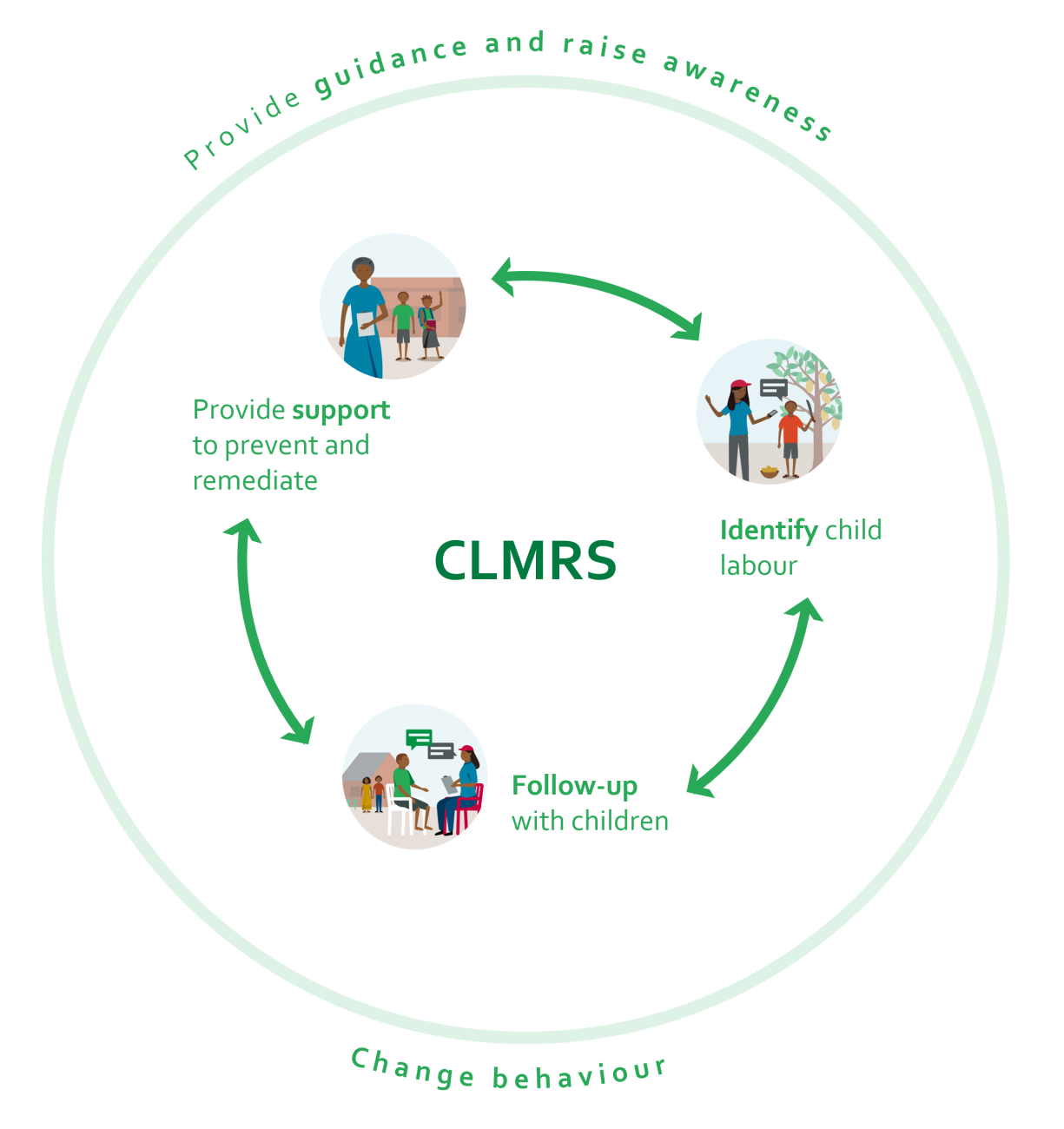Child Labour Monitoring and Remediation Systems (CLMRS) are systems designed to identify children in child labour, or at risk of child labour, and put in place support to effectively prevent and address it. Many companies are using CLMRS as part of their efforts to tackle child labour in their supply chains. When implemented effectively, they can reduce child labour by a third.
How CLMRS work in practice
CLMRS are built around community facilitators who visit households, raise awareness of the dangers of child labour, identify children engaged in hazardous work. If a child is found in or at risk of child labour, they are recorded in the system and support is provided to the child, their family and/or community.
After a child is identified as being in child labour, community facilitators conduct regular follow-up visits to monitor the child's situation and determine whether they need support. These follow-up visits are crucial because even after receiving support, it is not always easy for a child to stop working definitively. This is especially important as the risk of child labour increases as a child gets older.

Child Labour Monitoring and Remediation Systems implement four key functions:
- Raising awareness on child labour and resulting harm amongst farmers, children, and members of the wider community.
- Identifying children in child labour through an active monitoring process, using standardized data collection tools.
- Providing prevention and remediation support to children in child labour, and others at risk, and documenting the support provided.
- Following up with children identified in child labour to monitor their status on a regular basis until they have stopped engaging in child labour.
How CLMRS measure when children are out of child labour
Data suggests that if children have stopped doing hazardous tasks for at least two consecutive follow-up visits, they are much less likely to return to child labour again in the future. This is why we look at data from two consecutive follow-up visits to measure whether children are out of child labour.
Data from ICI-implemented CLMRS in Ghana and Côte d’Ivoire show that 36% of children previously in child labour, were no longer in child labour after two consecutive follow-up visits.
Remediation to address and prevent child labour
When a child is identified in or at risk of child labour several options are available to help resolve the situation through a CLMRS approach. These can be targeted at different levels, including individual children, farming households, or entire communities:
Children must have access to and be able to attend school, though this can be a significant challenge for rural cocoa communities. Supporting communities to create a good school environment for children by constructing or renovating facilities, including toilets and canteens, can help to increase both enrolment and attendance. Children can also receive school kits to equip them with what they need to learn. Running bridging classes can also enable out-of-school children to catch up on missed classes, while facilitating access to birth certificates can contribute to getting children into school and helping them to remain there.
Poverty and reliance upon cocoa as a single crop are two factors that can place children at higher risk of child labour. Farmers need to earn a living income if child labour is to be eliminated. Our work with farmers focuses on supporting them to diversify their income. This can reduce the vulnerability of farming families to income shocks that can, in some cases, increase the risk for children. We help farming families set up alternative income-generating activities, including other agricultural crops or small businesses. These activities can also increase community cohesion and link up with other forms of support such as Village Savings and Loans Associations.
Many of the activities implemented under the CLMRS can benefit women. Adult literacy classes, the set-up of small business or income-generating activities, and Village Savings and Loans Associations (VSLAs) can all play a role in addressing power imbalances between men and women, empowering women and enabling them to take on more decision making which can often result in better child protection.
Scaling up CLMRS
Together with our members, we are working to expand the use of CLMRS and similar systems to cover 100% of the cocoa supply chain in Côte d'Ivoire and Ghana by 2025. As such systems are scaled up, it is important to ensure they remain as effective as possible. We are continuously working to improve the effectiveness of CLMRS, you can find out more in our CLMRS benchmarking exercise.
If you are a cocoa trading, processing or manufacturing company and would like to know more about implementing CLMRS in your supply chain, please get in touch.